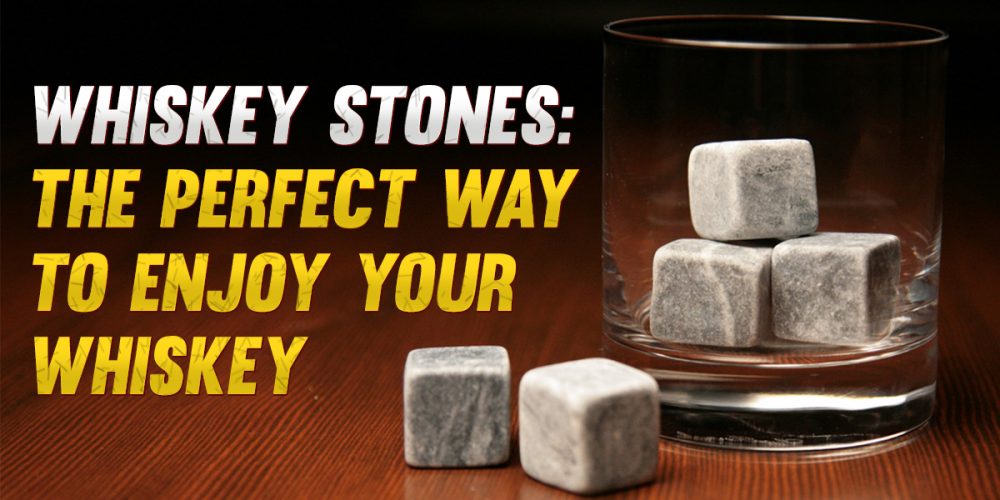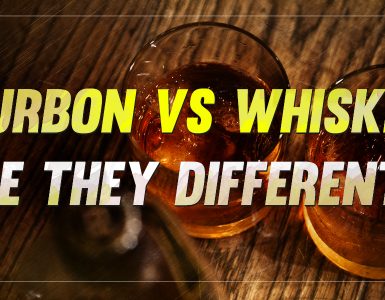If you love whiskey and haven’t yet tried whiskey stones, you’re missing out on what could well be the wave of the future.
First introduced in the late 1990s, the growing popularity and endurance of whiskey stones proves that they’re more than just a fad. Today, they can be found front and center on whiskey accessory shelves, alongside classic gift favorites like etched tumblers and angostura bitters.
They’re there for more than just aesthetic or decorative reasons. Whiskey stones offer an innovative way to help you discover the true pleasures of your favorite spirit, bringing your drinking enjoyment to the level distillers had intended.
What are whiskey stones?
Whiskey stones are small cubes, usually of solid soapstone, used to chill your whiskey or any other drink without ice or water. They are added to liquor after they’ve been stored in a freezer for about four hours, and can be reused numerous times. The best kinds can last a lifetime.
Whiskey stones come in a variety of sizes, so you have the option of using one large cube or several smaller ones. Some whiskey stones are ball shaped, mimicking the cutting-edge vibe of round ice cubes. They can be personalized and branded and given away as personal or corporate gifts.
Soapstone is the original material used as whiskey stones. This metamorphic rock is non-porous and is odorless and tasteless, so it doesn’t affect the taste and odor of your liquor. Soapstone also has a soft composition, which makes it easy to cut, shape, and smoothen. A finished whiskey stone will not cut or break your whiskey glass.
Whiskey stones have seen several innovations over the years. One of these is the use of stainless steel instead of soapstone. Other available whiskey stones are made of granite, marble, quartz, and surgical-grade steel.
The stones also now come in shapes other than cubes and balls, including fun nautical shapes, cylinders, and pyramids. They’re also available in a variety of finishes and colors, making them the perfect gift for the “man (or woman) who has it all”.
Why should you use whiskey stones?
The traditional way of chilling whiskey and other liquors is by adding ice, but melting ice dilutes your drink. Admittedly, this is perfectly fine for some whiskey drinkers – some even add water to their drink to ease the burning sensation from alcohol. But when you have a pricey bottle of aged whiskey, you’d want to savor the nuances of the flavor without watering down the taste. Additionally, whiskey with lower ABV would already have water added to it, so adding ice can further dilute the taste.
Whiskey stones lower a drink’s temperature in about 5 minutes without dilution. This preserves the original straight-from-the-bottle taste with the balance of flavors that has been carefully crafted by the distiller. At the same time, it chills your drink sufficiently to take away the burn of alcohol.
Whiskey stones don’t chill a glass as much as ice does. But ice also drops the drink’s temperature at a rapid rate, which can leave the taste dull and flat. Whiskey stones are capable of chilling a glass to 45° to 60° — the temperature range at which whiskey flavors have been optimized, and which distillers recommend. The stones can also keep their temperatures longer than ice, which means you can enjoy a chilled drink longer without the added water that comes from melting ice.
There’s plenty to be said about keeping the original flavor of whiskey without watering it down. Whiskey consumption has rapidly grown in the last few years and enjoys tremendous popularity today, more than it has at any other time. As a result, there has been an explosion of new varieties, including aged craft whiskey and flavored whiskey. There’s also a resurgence of traditional whiskeys, such as blended malt and Irish whiskey. And, of course, there are the all-time favorites, bourbon and scotch, which to many, define what whiskey is all about. If you love your whiskey and want to fully experience its many varieties, using whiskey stones is the way to go.
What are the best whiskey stones?
While there are other whiskey stone varieties, soapstone and stainless steel make up the bulk of options and are the most preferred by users.
Soapstone remains the most popular, to a large part because it was the first in the market. It’s more easily customizable than stainless steel, and come in finishes that range from semi-polished, retaining the stone’s original character, to highly polished with a sleek smoothness.
Stainless steel whiskey stones have also been getting plenty of good reviews. Appearance-wise, they give off a lustrous sheen that brightens up your glass. They have less shape variations than soapstone, though, coming mostly in circular and cube shapes.
Price-wise, soapstone costs less. You can get a set of nine or more soapstone cubes for $20, while the same amount can get you around four to six stainless steel cubes.
Generally, it takes three soapstone cubes to approximate the chilling action of one ice cube. One soapstone cube can lower the temperature of about three ounces of liquor by five degrees. On the other hand, the chilling action of one stainless steel whiskey stone is equivalent to one ice cube, bringing a three-ounce drink’s temperature down 12 degrees. Stainless steel whiskey stones can chill a glass longer and at lower temperatures than soapstone.
However, whiskey starts losing the complexity of its flavors at 45° to 50°, so a temperature of 60° is considered ideal. This is the average level of chilling that soapstone cubes can achieve.
In the end, the “best” whiskey stone comes down to your personal preference. If you want the more traditional way of chilling your drink, with just the right amount of burn removed, then soapstone is the better choice for you. On the other hand, if you want your whiskey more chilled, go for stainless steel.
Whichever you choose, whiskey stones give “on the rocks” a whole new definition. And whether your preference is for single or blended malt, or for Irish whiskey and its many variations, or perhaps the all-time favorites, bourbon and scotch, whiskey stones can bring out the true “spirit” in your drink.
















